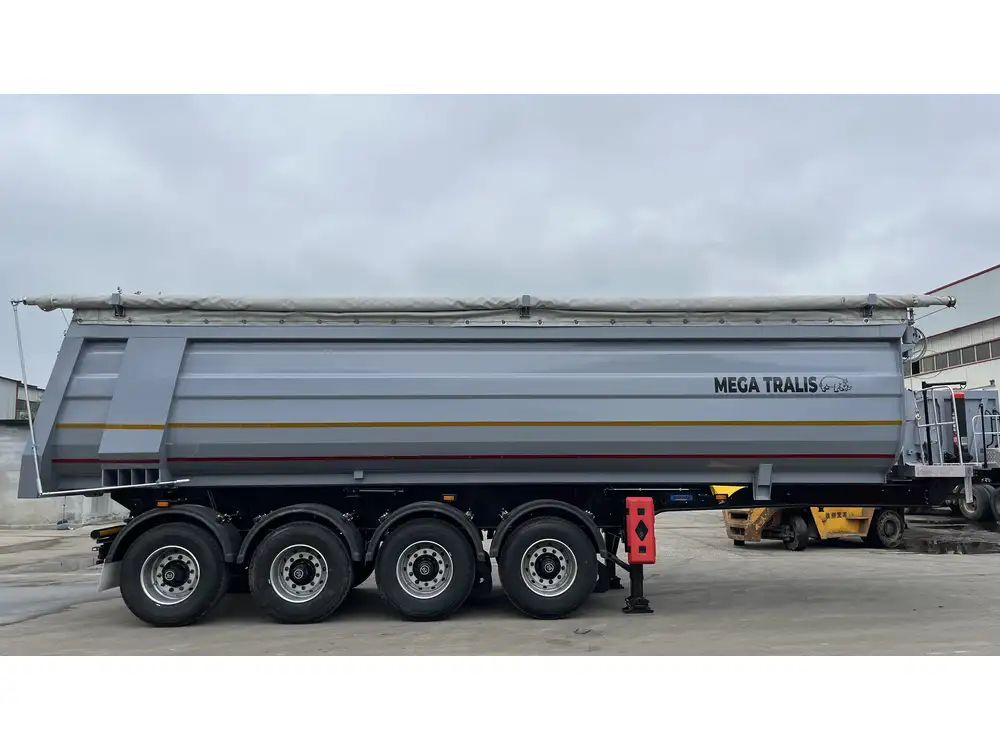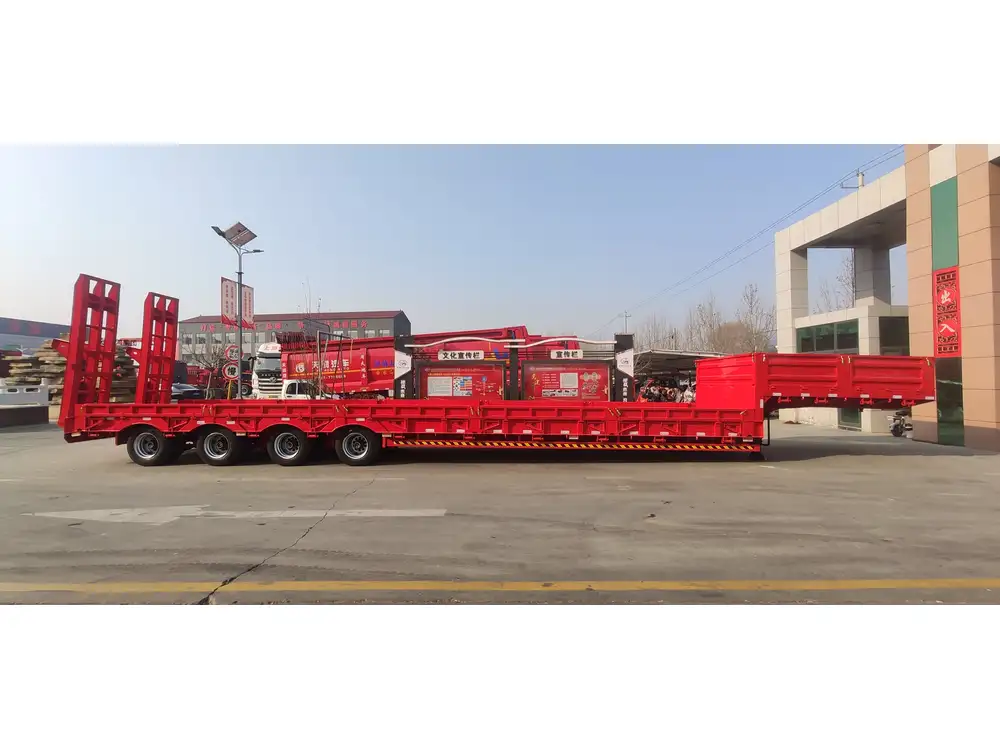Understanding the internal dimensions of a semi-trailer is crucial for logistics companies, freight transporters, and individual businesses involved in shipping goods. The measurements can significantly impact cargo capacity, loading strategies, and efficiency of transportation. In this comprehensive guide, we’ll break down the intricacies of semi-trailer dimensions, aiding potential users in making informed decisions regarding their shipping needs.
1. Standard Semi-Trailer Dimensions: An Overview
Table: Typical Semi-Trailer Sizes
| Type | Length (feet) | Width (feet) | Height (feet) | Cubic Feet (Approx.) |
|---|---|---|---|---|
| Standard Van Trailer | 53 | 8.6 | 13.5 | 3,865 |
| Reefer (Refrigerated) | 53 | 8.6 | 13.5 | 3,865 |
| Flatbed | 48 to 53 | 8.5 | Varies | Varies |
| Drop Deck | 48 to 53 | 8.5 | Varies | Varies |
| Tanker | 48 to 53 | 8.5 | Varies | Varies |

Key Takeaways:
- Length: The most common length for a semi-trailer is 53 feet, although shorter options (48 feet) are available.
- Width: Standard widths hover around 8.5 to 8.6 feet.
- Height: The typical height of a semi-trailer is about 13.5 feet, suitable for a variety of cargo.
Understanding these parameters sets the stage for addressing specific needs regarding cargo transport.
2. Internal Measurements: Stripping Down to the Essentials
When discussing the internal dimensions of a semi-trailer, we must consider both usable space and configurations. The internal dimensions generally vary based on trailer type and design.
Internal Measurements Breakdown:
- Wall-to-Wall Width: Typically between 8 to 8.5 feet.
- Ceiling Height: Often reaches 13.5 feet, though variations exist based on structural design.
- Loading Area Length: Generally mirrors the trailer’s stated external length, though bulkheads and other features may reduce usable space.

Example: Calculating Usable Load Space
For a standard 53-foot van trailer:
- Outside Length: 53 feet
- Wall Thickness: Approximately 0.5 to 1 inch per wall
- Usable Loading Length: Roughly 52 feet (taking into account the bulkhead and an allowance for adjustable loading equipment).
This approximation is essential for those organizing load dimensions effectively.
3. Specialized Trailer Types and Their Dimensions
3.1 Reefer Trailers: Temperature-Controlled Dimensions
Reefer trailers are critical in the transportation of perishable goods, necessitating specific internal measurements tailored for refrigeration units.
- Internal Dimensions: Briar or less than the typical 53-foot van due to insulation thickness.
- Icebox Space: The usable volume might slightly decrease from cubic capacity due to the refrigeration unit occupying valuable interior space.

3.2 Flatbed Trailers: The Versatility of Open Spaces
Flatbed trailers boast an open design catering to a wide array of freight sizes and weights.
- Loading Width: Approximately 8.5 feet.
- Weight Considerations: The absence of walls allows for taller cargo, but weight distribution must adhere to legal limits.
3.3 Tanker Trailers: Shaping Up to Liquid Dimensions
Tanker trailers feature rounded shapes for transporting liquids and gases, requiring a unique understanding of volume and weight distribution related to the cylindrical form.
- Capacity: Most tankers hold between 5,000 and 11,600 gallons, depending on construction.
- Internal Structure: Segmentation within the tanks can influence volume calculations.
4. Factors Influencing Internal Dimensions
Several factors affect the interior dimensions and usable space of a semi-trailer:
- Design Specifications: Different manufacturers employ varied design approaches impacting internal measurements.
- Custom Features: The inclusion of shelving, hooks, or specialized equipment will reduce the available space but increase functionality.
- Regulatory Compliance: Each state has specific regulations that may influence maximum size and weight, impacting what can be loaded into the trailer.

5. Calculating Cargo Capacity: More Than Just Dimensions
Understanding the internal dimensions is only one component of effectively utilizing a semi-trailer. Cargo capacity also hinges on weight distributions and types of goods transported. The following factors significantly influence cargo capacity:
Weight Limitations:
Heavy-duty semi-trailers typically have gross vehicle weight limits ranging from 80,000 pounds in the U.S. Most states enforce allocation laws to maintain safety on highways. This limitation directly affects how much cargo can fit inside a semi-trailer.
Load Distribution:
Proper load distribution within the trailer is essential for maximizing capacity. An imbalanced load may lead to handling difficulties, affecting transport safety and efficiency. Here’s how you can ensure optimal load distribution:
- Center of Gravity: Load heavier items first, further towards the front to maintain balance.
- Weight Over Axles: Consult manufacturer guidelines for proper weight distribution over axles.
- Tie-Down Systems: Employ a solid system to secure cargo and prevent shifting during transit.

6. The Importance of Knowing Your Measurements
6.1 Tailoring to Your Needs
Understanding internal dimensions allows businesses to tailor their shipping practices and optimize the use of available space, ultimately lowering costs.
- Calculating Volume: Knowing internal dimensions allows for more accurate predictions related to cargo volume and weight.
- Customized Solutions: Users can tailor shipping strategies based on specific dimensions best suited for particular goods, especially in industries like automotive parts, electronics, or food transportation.
6.2 Enhanced Efficiency
Organizations that factor in these dimensions are often more efficient with their routes and schedules, leading to lower operational costs and increased customer satisfaction. Specific strategies to enhance efficiency might include:
- Load Planning Software: Integrative tech solutions can aid in maximizing available trailer space.
- Real-time Tracking: Monitoring shipments can help adjust loads dynamically for optimal transportation.

7. Frequently Asked Questions (FAQs)
Q1: What is the maximum weight a semi-trailer should carry?
The maximum weight for semi-trailer trucks in the U.S. typically caps at 80,000 pounds, including the weight of the truck and trailer combined.
Q2: Can I modify a semi-trailer for specific cargo?
Yes, modifications can be made to accommodate unique cargo requirements, including refrigeration systems, shelving, or compartments.

Q3: How do I determine if my cargo fits?
Measure your cargo dimensions and consult the internal dimensions of your semi-trailer to ensure it fits within the available space.
Q4: Are there special considerations for transporting hazardous materials?
Yes, transporting hazardous materials requires compliance with specific government regulations, as well as careful consideration of weight, volume, and load type.
8. Conclusion: Optimize Your Shipments with Knowledge of Dimensions
A thorough understanding of the internal dimensions of semi-trailers empowers manufacturers, shippers, and logistics providers to optimize cargo loads, ensure compliance, and increase shipment efficiency. By leveraging the information shared above, businesses can effectively improve their transportation processes, gain insights into better load management, and ultimately achieve cost savings.
Understanding dimensions, maximizing space, and adhering to weight regulations are indispensable for today’s freight world, significantly impacting the bottom line. Whether your operation hinges on standard van trailers or specialized configurations, detailed knowledge of dimensional specifications will undoubtedly facilitate smarter, more effective shipping decisions.



